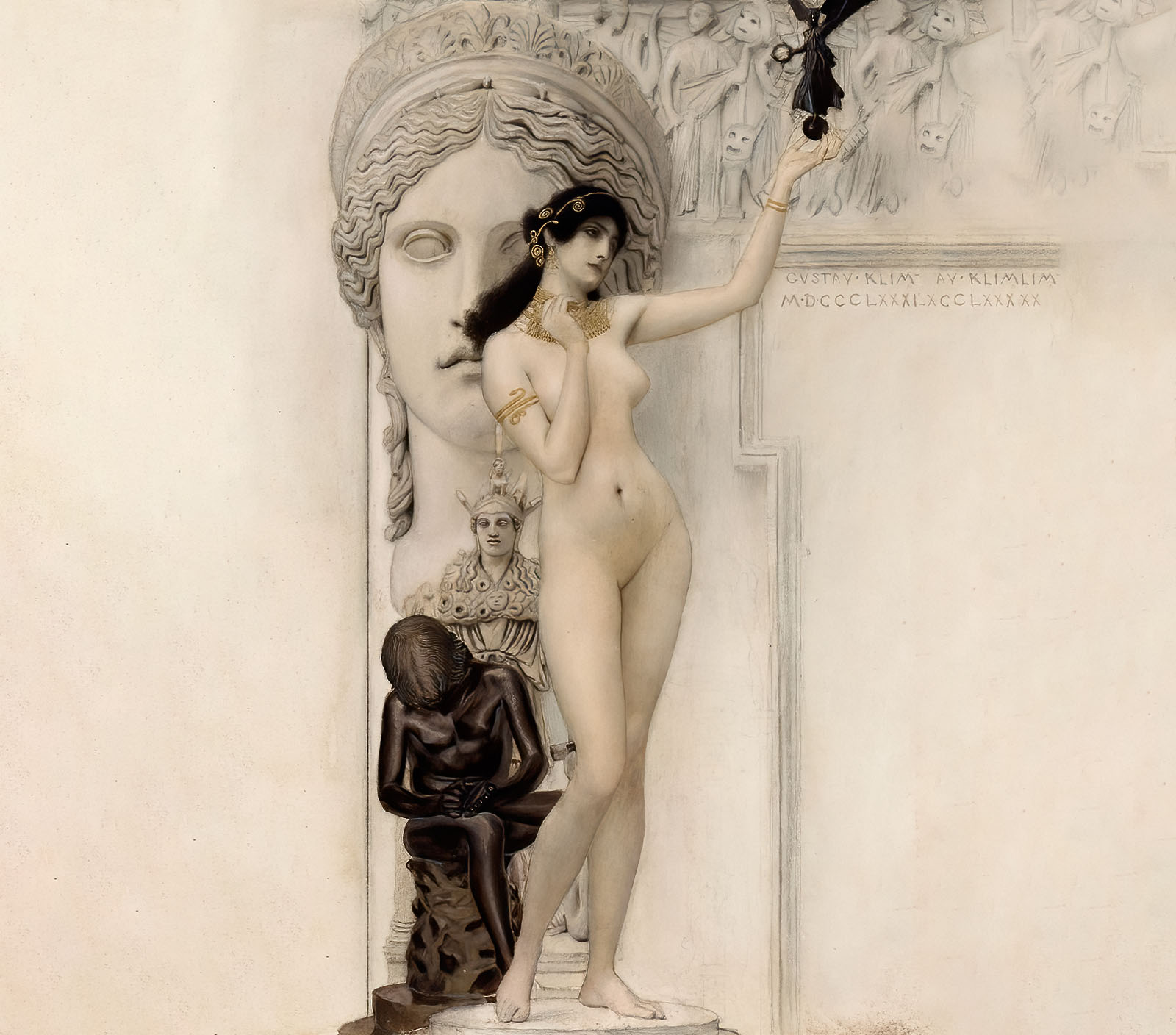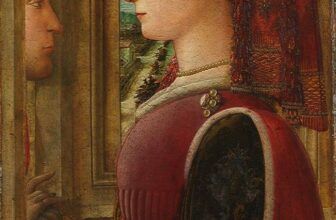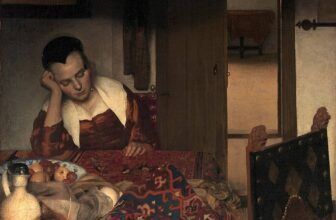
Meaning of The Allegory of Sculpture by Gustav Klimt
Gustav Klimt, one of the most influential figures in the Viennese Secessionist movement, is best known for his iconic gilded works and erotic, symbol-laden compositions. While masterpieces such as The Kiss and Portrait of Adele Bloch-Bauer I often dominate the conversation around Klimt, his earlier works, especially those executed as academic commissions, reveal critical insights into his development as a painter and thinker. Among these lesser-known but deeply meaningful creations is Allegory of Sculpture, a work that stands at the crossroads of academic rigor, allegorical depth, and emerging modernism.
This essay provides a comprehensive examination of Gustav Klimt’s Allegory of Sculpture, its historical context, visual and thematic elements, symbolic interpretations, artistic style, and current location. Through this exploration, we gain a deeper appreciation of Klimt’s transitional phase and his mastery of merging classical traditions with the seeds of a bold new artistic vision.
Creation of the Painting
Allegory of Sculpture was painted by Gustav Klimt in 1889, during a phase in his career when he, along with his brother Ernst and fellow artist Franz Matsch, was commissioned to create decorative works for various institutional buildings. This painting was part of a broader series of works created for the Kunsthistorisches Museum (Museum of Fine Arts) in Vienna. Klimt and his colleagues had formed what was known as the “Künstler-Compagnie,” a group that received commissions from the state to embellish monumental public buildings with allegorical and historical subjects.
At this stage, Klimt was still deeply embedded in the academic art traditions of the 19th century, trained at the Vienna School of Arts and Crafts. However, even within the confines of academic decorum, Klimt’s early genius for form, symbolism, and composition began to shine. Allegory of Sculpture was created as part of the “Faculty Paintings”, decorative allegories that symbolized the disciplines of art, science, and knowledge. These works were meant to glorify the cultural and intellectual pursuits upheld by institutions like the Museum of Art.
Painted in oil on canvas, the work follows the conventions of history painting and allegorical imagery, yet it contains subtle deviations that presage Klimt’s later break with academicism.
What Is Happening in the Painting?
Allegory of Sculpture presents a central female figure, rendered in a classically inspired pose, with a strong, muscular form that embodies the spirit and labor of sculpture. She holds a sculptor’s tool, perhaps a chisel or mallet, and gazes thoughtfully, exuding both focus and introspection. Her robust physique deviates from the delicate, often passive female archetypes common in 19th-century academic art. Behind her or adjacent to her, a bust or statue is often depicted, possibly alluding to the creative process and the product of her artistic labor.
Surrounding elements may include stone, marble blocks, or tools of the sculptor’s trade, anchoring the allegory in the material world. The background is typically subdued, focusing the viewer’s attention on the form and gesture of the figure. There is a clear tension between idealism and realism, the woman is idealized in the style of Greek goddesses, yet her body is rendered with anatomical precision, almost sculpturally in itself.
The painting captures a moment not of action but of contemplation, a snapshot of artistic cognition, where creation emerges not just from the hand but also from the mind.
What Is the Painting All About? Themes and Representation
At its core, Allegory of Sculpture is a personification of sculpture as an art form. This method of personifying disciplines, emotions, or abstract concepts has a long history in Western art, dating back to the Renaissance and earlier. Klimt continues this tradition by embodying Sculpture in the form of a female figure, a practice rooted in the classical belief in muses and goddesses as symbols of creativity.
Yet, this is not merely a symbolic gesture. The figure in Klimt’s painting does not represent an ethereal muse but a laborer of thought and form. Her expression and posture suggest not divine inspiration but intellectual rigor and physical engagement. Through this, Klimt elevates the act of sculpture from manual labor to a noble, cerebral pursuit. The work becomes a meditation on the nature of artistic creation, emphasizing process, thought, and transformation.
In addition, the representation of Sculpture as a woman offers fertile ground for interpretation. It challenges the male-dominated narrative of classical sculpture, often associated with male artists chiseling idealized female forms. Here, the female figure is not the passive object but the active creator. This inversion is subtle yet significant, reflecting Klimt’s increasingly nuanced exploration of gender, creativity, and identity.
Symbolism and Meaning in the Allegory of Sculpture
The symbolic depth of Allegory of Sculpture lies not only in its subject matter but also in its formal elements. Every detail serves to underscore a particular conceptual framework:
The Female Figure: She is both symbol and subject. Her strong, grounded body suggests the tactile, physical nature of sculpture, while her introspective gaze implies the inner vision required to manifest art from raw material. She embodies the duality of art as both physical and metaphysical.
Tools of the Trade: Chisels, mallets, or the stone bust signify the materiality of sculpture. These are not merely props but extensions of the artist’s mind and hand. They point to the transformation of inert matter into expressive form, a metaphor for the human capacity to shape the world.
Stone or Marble Blocks: These represent potential, raw, unformed matter that awaits the sculptor’s vision. Symbolically, they might also represent the human soul or intellect, awaiting the refinement of knowledge and culture.
Lighting and Composition: Klimt’s use of light often highlights the contours of the figure, emphasizing her as a sculptural form. The background recedes, allowing her to emerge almost like a bas-relief. This play of light and form blurs the boundary between painting and sculpture, reinforcing the thematic integration of the two media.
The Bust or Sculpture in Progress: A mirror of the creator, it might represent legacy, identity, or the idea of self-making, how the artist’s work becomes a reflection of their inner world.
Overall, the painting is a meditation on transformation: of material into form, of thought into expression, and of person into symbol.
Artistic Style and Techniques: What Type of Art Is It?
Allegory of Sculpture falls under the genre of allegorical painting, and stylistically, it is situated within the framework of late 19th-century academic realism. However, Klimt’s handling of form and subject hints at the transition from academic to modernist aesthetics. His figures, while grounded in classical ideals, are presented with a sensual realism that departs from the cold perfection of Neoclassicism.
The painting can also be seen as part of the historicist tradition, wherein artists mined classical and Renaissance themes to convey universal truths. Klimt, however, imbues this tradition with a personal vision, injecting a psychological depth and bodily immediacy that anticipates his later Secessionist works.
Even in this early piece, we see Klimt’s preoccupation with the human form, sensuality, and the role of the artist, all themes that would dominate his mature oeuvre. The blending of figure and abstraction, the ornamental attention to drapery or surface, and the isolated focus on a single protagonist, all foreshadow the developments that would soon erupt in Klimt’s golden phase.
The Journey and Current Location of the Painting
Unlike Klimt’s more famous paintings, Allegory of Sculpture was never intended for private collectors or galleries. It was created as a public decorative piece, part of a cycle of artworks adorning the ceilings and walls of the Kunsthistorisches Museum in Vienna. These works were designed to elevate the building’s educational mission by embodying the classical disciplines of knowledge.
Today, the painting remains in Vienna, housed in the Kunsthistorisches Museum, where it continues to be displayed as part of the historical interior decoration. It is not framed and hung like a gallery piece but rather integrated into the architecture, making it part of a larger narrative experience within the museum space. Visitors can still view it in situ, where it retains its original function as both an educational and aesthetic object.
Significance
Although not as widely discussed as Klimt’s later masterpieces, Allegory of Sculpture is a vital work in his artistic evolution. It represents a moment of synthesis between academic training and the seeds of rebellion against convention. It shows Klimt engaging deeply with classical ideas while beginning to question their limitations.
Importantly, the painting offers a proto-feminist perspective on artistic labor, recasting the woman not as muse or object but as creator. This reconfiguration of roles is central to understanding Klimt’s later fascination with female identity, power, and autonomy.
Moreover, Allegory of Sculpture is a rare meditation on the nature of art itself. It doesn’t just celebrate sculpture as a discipline; it reflects on what it means to create, to shape, and to give form to thought. In doing so, it speaks to the very heart of the human artistic impulse.
Gustav Klimt’s Allegory of Sculpture is a powerful, multilayered work that deserves far more attention than it typically receives. Beyond its immediate function as part of a decorative series, it stands as a profound statement on the nature of artistic creation. Through its symbolic richness, classical allusions, and early modernist tendencies, the painting bridges past and future, offering a glimpse into Klimt’s developing vision.
As both an homage to sculpture and a commentary on the act of creation itself, Allegory of Sculpture reveals a Gustav Klimt who is still emerging, still questioning, and already transforming the very fabric of art. In this sense, the painting is not only an allegory of sculpture, but an allegory of Klimt’s own journey as an artist.




